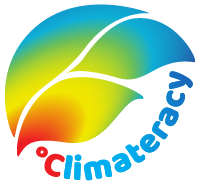0.6.1 Climate and climate change are highly abstract concepts
admin February 3, 2022
First of all, you should keep in mind that climate and climate change are highly abstract concepts. Helping to make the topic more concrete and tangible is one way an educator may help students understand climate and climate change. One way to do this is through demonstrations and modeling of cause and effect (e.g. as this experiment modeling glacial ice melt demonstrates) and showcasing actual local impacts of climate change, such as the spread of invasive species or increased flooding or wildfires for example.
“For example, rather than [presenting] statistics about the depleting of natural rain forest, movies that depict the harm done to particular animals, and perhaps even special trees or plants, may help.”
Excerpt from Paul A.M. Van Lange, Brock Bastian (April 23, 2019) Reducing Climate Change by Making It Less Abstract, Scientific American, available online (last accessed 5 Dec 2021) at: https://www.scientificamerican.com/article/reducing-climate-change-by-making-it-less-abstract/
But there lies a danger – making an abstract thing simple for teaching does not make the phenomenon itself simple; and simplistic understandings lead to simple and often wrong solutions (e.g. as has been shown with carbon offsetting – see this and this). So your aim is to develop your students’ thinking, step by step, to grasp the complex and abstract concepts and principles of climate change and how other phenomena are related to it.
The skill of ‘systems thinking’ can be useful here. For example, you might read in the local news that the farmers are protesting after a season of drought, or your school is trying to make a decision on how to reduce the heating costs (or improve ventilation during hot days), or an NGO may want to come and talk to your students about the importance of composting and the need to protect biodiversity (e.g. see this article or this one) – all these topics are, in one way or another, related to climate change and more broadly with the concept of sustainability and sustainable development. As an educator you can help students understand how one phenomena affects the next. One way to help students make connections between phenomena and learn about systems is by using models such as the “iceberg”. It’s a useful tool to help develop critical thinking and analysis skills. It can also be used in different subject areas and for interdisciplinary learning.

Image: The iceberg model. Source: https://www.researchgate.net/figure/The-iceberg-model-as-a-tool-for-guiding-systems-thinking-16_fig1_329324529
Good to know!
One way to help students make connections between phenomena and what they learn in school is via interdisciplinary learning – making explicit connections between what is learned in different subjects. You can team up with your colleagues in teaching about a topic such as climate change while covering the areas of multiple disciplines.
Teacher collaboration also has many other benefits!
Read more about teacher collaboration: https://www.branchingminds.com/blog/teacher-collaboration-mtss & https://oecdedutoday.com/teacher-collaboration-challenging-learning-environments/

